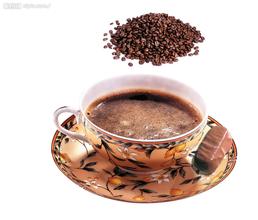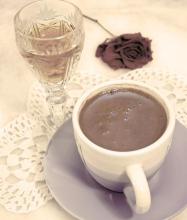Introduction to the characteristics of Flavor description treatment of Angora Coffee Bean
In 1575, the Portuguese began to occupy areas south of the Congo, established the city of Luanda, and conquered several indigenous tribes, allowing whites to slowly emigrate to Angola. Over the next 50 years, the Portuguese gradually expanded their territory. In 1617, Portugal established the city of Benguela in Angola, which became more stable and confirmed Portugal's position in Angola from then on. From 1640 to 1648, the Dutch captured some important ports here, which were later recaptured by the Portuguese. [1]
In the following two centuries, the economic development of Angola was slow. At that time, although the Portuguese were also committed to developing agricultural production in Angola, the main income of the Angolan colonies at that time depended on the slave trade to Brazil, which was not abolished until 1830. It was not until the late 19th century that Angola's economy turned inland, and the Portuguese began to actively develop agricultural and underground mineral resources. During World War I, Angola was attacked by German troops from South Africa. Because of the persistence of the Portuguese, they were not ravaged by the Germans.
Coffee producing areas in Angola:
Ninety-eight per cent of coffee in Angola (Angola) is Roberts. The best brands in Angola used to be Ambriz, Amborm and NovoRedondo, all of which are known for their consistent quality.
The characteristics of Angolan coffee:
Flavor: not available in the West in recent years, but used to be famous for its high acidity
Suggested baking method: medium to deep baking
★: general
The market for Angolan coffee:
In the mid-1970s, 98 per cent of Angola's annual coffee exports were Roberts (probably the best in Africa), but total production fell in 1990. Most of Angola's coffee is exported to the United States, the Netherlands and, of course, Portugal.

Important Notice :
前街咖啡 FrontStreet Coffee has moved to new addredd:
FrontStreet Coffee Address: 315,Donghua East Road,GuangZhou
Tel:020 38364473
- Prev

Introduction of Panamanian Cupid Coffee Flavor and taste characteristics Variety production area treatment method
Manor: Lelida 10 Lerlda Estate Lot10 treatment: White honey treatment Honey varieties: Kaduai Catuai score and cup test CuppingScore:87 lime,floral coconut,clean,sparkling,mediumbody lime, coconut flower scent, clean, lively acid, medium alcohol thickness unique Colombian red wine treatment method Colombia
- Next

Taste characteristics of Spanish Coffee Bean Flavor description and treatment
In Spain, you will never be blamed for drinking coffee. Spaniards deeply understand the role and impact of coffee on life. It is through coffee that they taste the joy of life. If you come to Spain, you will feel that life has turned a new page, you have too much to see, the Holy Family Church and Quill Park and many other world cultural heritages are waiting for you, but
Related
- Detailed explanation of Jadeite planting Land in Panamanian Jadeite Manor introduction to the grading system of Jadeite competitive bidding, Red bid, Green bid and Rose Summer
- Story of Coffee planting in Brenka region of Costa Rica Stonehenge Manor anaerobic heavy honey treatment of flavor mouth
- What's on the barrel of Blue Mountain Coffee beans?
- Can American coffee also pull flowers? How to use hot American style to pull out a good-looking pattern?
- Can you make a cold extract with coffee beans? What is the right proportion for cold-extracted coffee formula?
- Indonesian PWN Gold Mandrine Coffee Origin Features Flavor How to Chong? Mandolin coffee is American.
- A brief introduction to the flavor characteristics of Brazilian yellow bourbon coffee beans
- What is the effect of different water quality on the flavor of cold-extracted coffee? What kind of water is best for brewing coffee?
- Why do you think of Rose Summer whenever you mention Panamanian coffee?
- Introduction to the characteristics of authentic blue mountain coffee bean producing areas? What is the CIB Coffee Authority in Jamaica?

